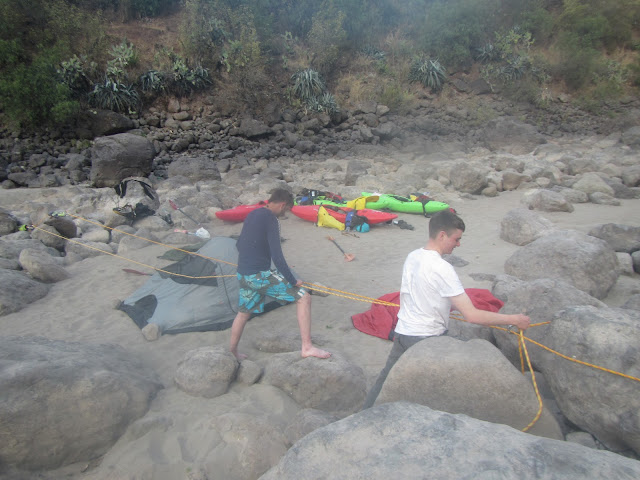 |
| Alby Paddles 'Purgatory' |
 |
| Tom paddling 'Moyla' |
28/07/12
After a couple of rest days in Cuzco, with some long sleeps and salsa lessons, the team arranged to return to the Apurimac to complete the final section. In trying to find someone capable of removing Derf's boat from the tricky pin we spoke to many of the rafting companies and met Julio, a local kayakista and raft guide, who offered to help us find transport for the run and accompany us down the river. The commercial section is around 40km long and takes most rafting companies 3 days to complete - again we have heard that in a kayak it is more than do-able in a day.
As arranged, the taxi arrived at the hostel at 3am to pick us up. Unfortunately due to an eventful night of gastric distress neither Tom nor Alex could face the river, leaving Alby, Adam and Julio to tackle the beast alone. Four hours later we arrived back at the river and put on just under the bridge we had taken out from a few days previously.
 |
Adam and Julio at the bottom of "Purgatory"
The river threw us continuous grade 4+ rapids from the start but with Julio to show us the lines made it to the first (aptly) named rapid "portage" in record time. After a swift portage around the grade 5 siphon garden we continued down the river with few inspections and some great lines provided by Julio's boss-like memory. Paddling with such a skilled kayaker who knows the river like the back of his hand was a great experience and meant we finished the section in less than 7 hours! A great days paddling enjoyed by all.
We paddled this section of the Apurimac a total of 3 times on different occasions, joined by the whole team!
 |
| Alby and Adam paddle into the canyon |
|
 |
Adam drops into "You first"
|
 |
Alby enjoying "The last laugh"
|
 |
| Adam punching the same hole |


















































